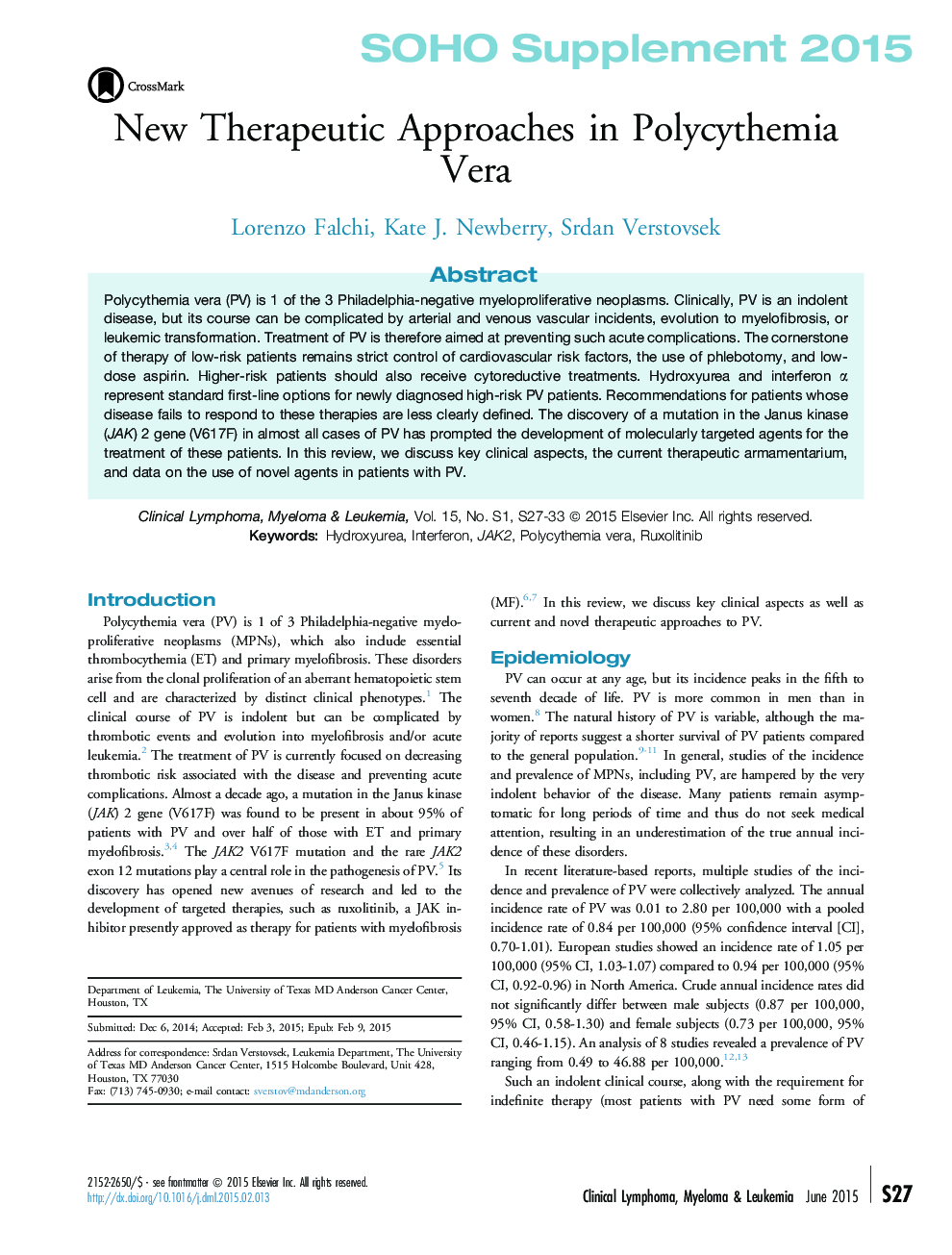| Article ID | Journal | Published Year | Pages | File Type |
|---|---|---|---|---|
| 5883057 | Clinical Lymphoma Myeloma and Leukemia | 2015 | 7 Pages |
Polycythemia vera (PV) is 1 of the 3 Philadelphia-negative myeloproliferative neoplasms. Clinically, PV is an indolent disease, but its course can be complicated by arterial and venous vascular incidents, evolution to myelofibrosis, or leukemic transformation. Treatment of PV is therefore aimed at preventing such acute complications. The cornerstone of therapy of low-risk patients remains strict control of cardiovascular risk factors, the use of phlebotomy, and low-dose aspirin. Higher-risk patients should also receive cytoreductive treatments. Hydroxyurea and interferon α represent standard first-line options for newly diagnosed high-risk PV patients. Recommendations for patients whose disease fails to respond to these therapies are less clearly defined. The discovery of a mutation in the Janus kinase (JAK) 2 gene (V617F) in almost all cases of PV has prompted the development of molecularly targeted agents for the treatment of these patients. In this review, we discuss key clinical aspects, the current therapeutic armamentarium, and data on the use of novel agents in patients with PV.
